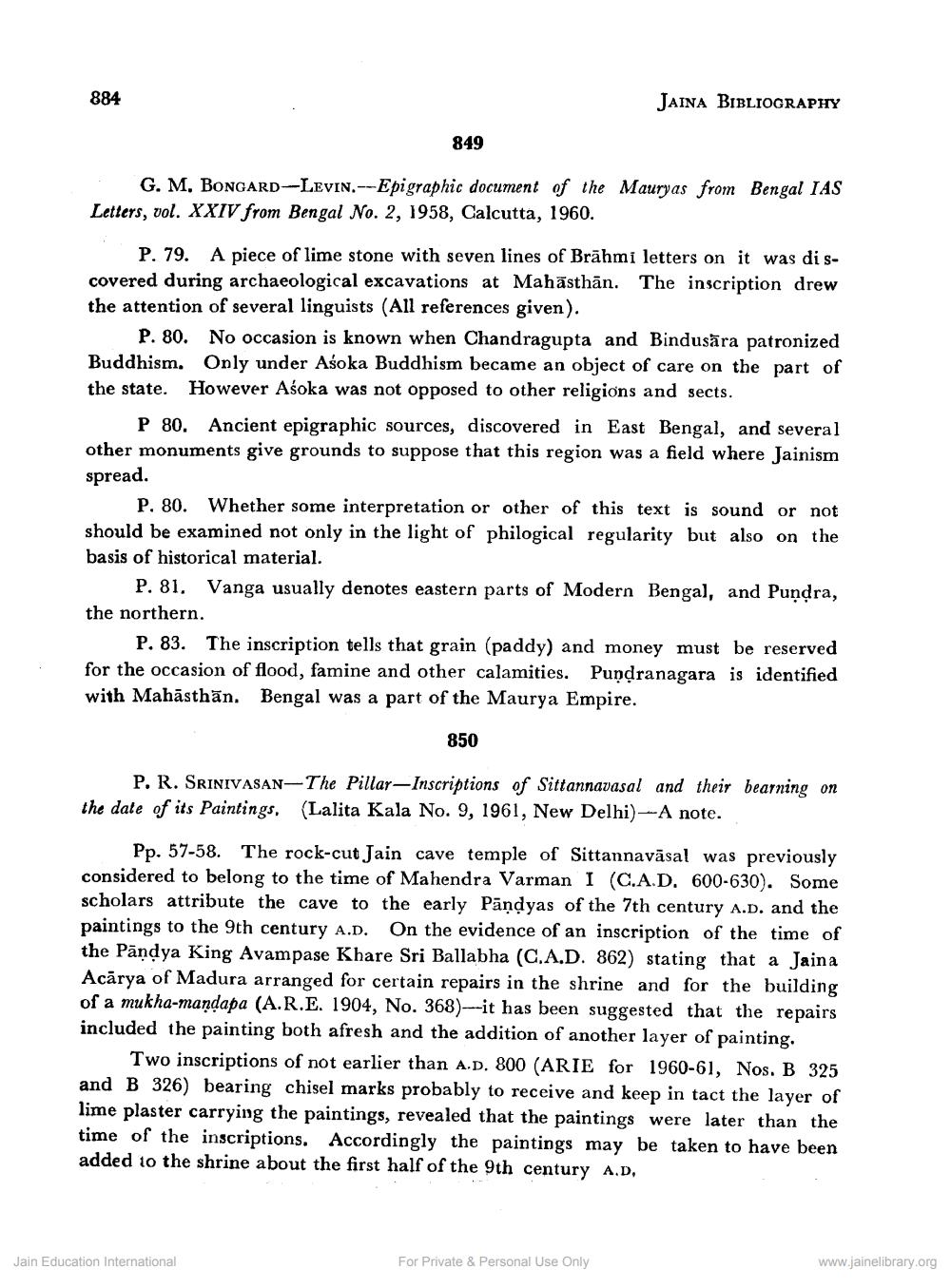________________
884
JAINA BIBLIOGRAPHY
849
. G. M, BONGARD-LEVIN.--Epigraphic document of the Mauryas from Bengal IAS Letters, vol. XXIV from Bengal No. 2, 1958, Calcutta, 1960.
P. 79. A piece of lime stone with seven lines of Brāhmi letters on it was di scovered during archaeological excavations at Mahāsthān. The inscription drew the attention of several linguists (All references given).
P. 80. No occasion is known when Chandragupta and Bindusāra patronized Buddhism. Only under Asoka Buddhism became an object of care on the part of the state. However Asoka was not opposed to other religions and sects.
P 80. Ancient epigraphic sources, discovered in East Bengal, and several other monuments give grounds to suppose that this region was a field where Jainism spread
P. 80. Whether some interpretation or other of this text is sound or not should be examined not only in the light of philogical regularity but also on the basis of historical material.
P. 81. Vanga usually denotes eastern parts of Modern Bengal, and Pundra, the northern.
P. 83. The inscription tells that grain (paddy) and money must be reserved for the occasion of flood, famine and other calamities. Pundranagara is identified with Mahāsthān. Bengal was a part of the Maurya Empire.
850
P. R. SRINIVASAN-The Pillar— Inscriptions of Sittannavasal and their bearning on the date of its Paintings. (Lalita Kala No. 9, 1961, New Delhi)-A note.
Pp. 57-58. The rock-cut Jain cave temple of Sittannavāsal was previously considered to belong to the time of Mahendra Varman I (C.A.D. 600-630). Some scholars attribute the cave to the early Pandyas of the 7th century A.D. and the paintings to the 9th century A.D. On the evidence of an inscription of the time of the Pandya King Avampase Khare Sri Ballabha (C.A.D. 862) stating that a Jaina Acārya of Madura arranged for certain repairs in the shrine and for the building of a mukha-mandapa (A.R.E. 1904, No. 368)---it has been suggested that the repairs included the painting both afresh and the addition of another layer of painting.
Two inscriptions of not earlier than A.D. 800 (ARIE for 1960-61, Nos. B 325 and B 326) bearing chisel marks probably to receive and keep in tact the layer of lime plaster carrying the paintings, revealed that the paintings were later than the time of the inscriptions. Accordingly the paintings may be taken to have been added to the shrine about the first half of the 9th century A.D.
Jain Education International
For Private & Personal Use Only
www.jainelibrary.org




